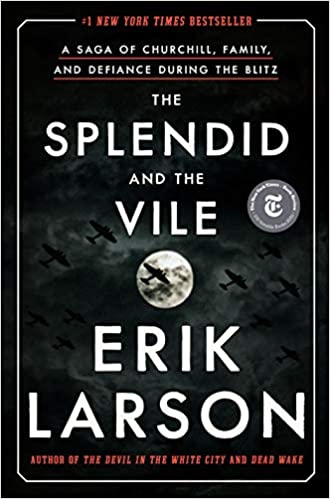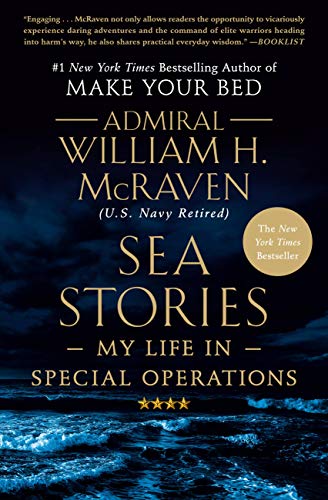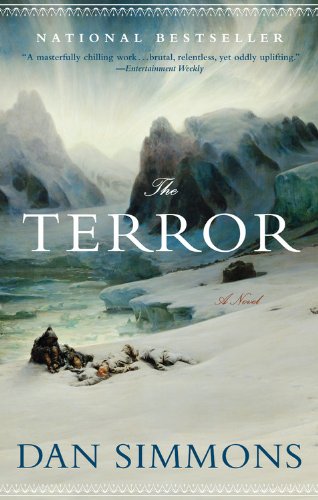One silver lining of quarantine/lockdown has provided an opportunity to spend more time reading and writing. While I was finally able to wrap up the trilogy, I also read a handful of awesome books. Here are a few of the highlights over the previous year.
My most recent was Erik Larson’s The Splendid and the Vile, an account of the German Luftwaffe’s air raid “blitz” campaign over London and other towns and cities across the United Kingdom. I really enjoyed Larson’s other historical works Dead Wake, In the Garden of Beasts, and my favorite, The Devil in the White City, which focuses on the technological progress and advancements displayed at the 1893 World’s Fair in Chicago as the backdrop and juxtaposed against the diabolical actions of the doctor and serial killer Henry Holmes, whose labyrinthine hotel near the fair was a torture chamber where he lured young women to their gruesome deaths.
The Splendid and the Vile centers on one year of World War II – 1940 to 1941 – beginning with Winston Churchill’s rise to power as prime minister of England, Germany’s attempt to batter Great Britain into surrender through devastating and nightly air raids, the Royal Air Force’s (RAF) impotence in mitigating and stopping these nightly attacks, and Churchill’s courtship of the United States to join the war or at the very least provide much-needed aid and materials. Most astonishing to me was Churchill’s leadership and the resilience of the civilians who became unwitting participants in the war. These civilians continued to work, play, live their lives amid strict food rationing, and hunker down in bunkers and bomb shelters at night only to emerge in the morning still determined and resolute to withstand the constant and incessant punishment Germany’s air force delivered on a near-daily basis. Yet it is Churchill’s unwavering belief in victory and indomitable will to lead, even through the darkest and most dispiriting times, that is the star of the show. He simply would not accept defeat, and this steadfast belief spread through his government, armed forces, and its citizenry.
While most everyone knows about Churchill’s oratorical gifts, it is other details in the book that endear him to readers. From his penchant to handling critical government business in his pajamas in bed surrounded by his secretaries and advisors, to his habit of taking naps and baths during the day, to his tendency to hold court into the wee hours of the morning talking strategy, dancing to the gramophone, and drinking untold amounts of alcohol, he was truly one of a kind. One of my favorite and most indelible scenes is when Churchill and his delegation visits the White House and President Franklin Roosevelt wheels himself into Churchill’s room to find him buck-naked drinking a whisky and smoking a cigar, and they proceed to drink and talk strategy for the next couple hours with Churchill finding no need to put on a stitch of clothing.
What makes this book truly unique are the ancillary characters who are brought into the spotlight, including Churchill’s wife Clementine and youngest daughter Mary Churchill, whose diaries reveal another side of the war, Churchill’s philandering and alcoholic son Randolph, whose gambling habits leave him and his family in constant debt, Churchill’s private secretary Jock Colville, who desperately wants to join the RAF in the war effort, his closest advisors Pug Ismay (nicknamed because his face resembled a certain canine breed) and the gossip-loving and maverick Lord Beaverbrook, and American diplomats Harry Hopkins and later Averell Harriman (the latter began an affair with Randolph’s disillusioned wife Pamela), who acted as the lens into Britain’s war effort on behalf of Roosevelt. Hopkins possessed one of the best lines of the book – after Churchill gave a monologue to him and other advisors about their war aims, Hopkins responded that President Roosevelt had no interest in that, much to the horror of Churchill and his advisors. A moment later, Hopkins explained that the Americans were “only interested in seeing that that goddamn sonofabitch Hitler gets licked,” much to the laughter and relief of the English. While parts of the book become a little mundane and trivial, it is otherwise a fascinating read on leadership and determination in the face of seemingly insurmountable odds.
An apropos book I read during quarantine is David K. Randall’s Black Death at the Golden Gate, an account of federal officials’ attempt to stop the spread of the bubonic plague that had been discovered in a deceased Chinese immigrant in San Francisco around the start of the 20th Century. It was eerie how many different themes emerged in this book that reflected what we are seeing today. There was denial, fabrications, and obfuscation of the presence of the disease on American shores, there was confusion surrounding the science of identifying the disease, and there was extreme anti-Asian sentiment, with first Honolulu’s and then San Francisco’s Chinatown being quarantined and its citizens treated like prisoners. It was honestly an unsettling read, making one question the motives of elected officials and those in positions of authority, and whether they possess our best interests at heart. As we have seen during this pandemic, it is difficult to know what or who to believe, whether the “experts” are being listened to and if their guidance is sound, and whether we are relying on facts and science to lead us or do we fall back on fear and stereotypes. In one regard, after finishing the book, I felt that maybe we have not learned that much in over a hundred years, a depressing sentiment to be sure.
Probably my favorite of the bunch was Admiral William McRaven’s Sea Stories, My Life in Special Operations. Admiral McRaven’s writing is exemplary and the way he articulates each story, the lessons he learned, and what they meant for the nation, is a thrill ride. Each chapter is a different story in a different time and place from the previous chapter. The standouts are obviously the behind-the-scenes stories of the assassination of Osama bin Laden and the capture of Saddam Hussein, but every story grabs you from the start. Admiral McRaven provides an insider’s perspective of the planning and execution of special operations missions, and his accounts of interacting with some of the highest military officers and politicians in the land, including Presidents George W. Bush and Barack Obama, are fascinating. The dedication and precision these men and women apply to their missions is unrivaled and a marvel to observe. One heartbreaking scene occurs when Admiral McRaven visits a badly wounded soldier who lost several limbs and has burns across most of his body. The soldier’s first and only concern is how soon he can return to his unit, an example of the dedication and loyalty our troops hold for each other and their nation. Admiral McRaven, along with all of our troops, are true American heroes who oftentimes represent the best our country has to offer. We are so proud of them and we thank them for their service.
A fun read with laugh-out loud segments (like a comic strip) is Kelly and Zach Weinersmith’s Soonish. The pictures, however, should not fool you. The Weinersmiths discuss extremely advanced and intricate technologies that may soon be coming to our world (or are already being developed). They have a gift for explaining these technologies in a straightforward and understandable manner, with analogies and jokes galore to keep it light. From space elevators to fusion power, from swarm robots to brain-computer interfaces, and from bioprinting (they can print me a new liver?) to precision medicine, some of the topics covered here are fascinating. Each chapter is an entirely new technology, where they explain the concept and its benefits, where it currently is in development, how it may change the world, and any potential pitfalls or “concerns” they have. I will be on the lookout for any additional works by this husband-and-wife team, and I have to check out the acclaimed Science . . . sort of podcast that Kelly frequently co-hosts.
Where to start with this one? This one is definitely not for the faint of heart. Dan Simmons’ book is a fictionalized account of Captain John Franklin’s lost expedition to the Arctic in the mid-19th Century aboard the British ships HMS Terror and HMS Erebus. I learned later that many of the characters in the book were actually members of Franklin’s crew, whose disappearance has never been explained. It is a slog of a book, clocking in at just under 800 pages, and if you live in a cold-weather climate, it is the perfect book to read over the winter (or conversely, maybe it is better to read during the heat of summer) – I think I sometimes felt the bitter cold and wind emanating from the pages. The ships become stuck in ice and that is only the start of their ordeal. Food supplies (and rum) dwindle or become rotten, mutiny is constantly in the air, illness and disease runs rampant, and, most terrifyingly, the crews are being stalked by an unknown entity on the ice. I have not yet had a chance to watch the AMC series based on the book, but it received very good reviews and I am hoping to catch it at some point, maybe in the dead of winter with a hot chocolate (or hot toddy).
Last but certainly not least is “The Queen of Mystery” Agatha Christie’s And Then There Were None, first published in 1940 (!). I can remember watching the film version back in grade school, but I had never actually read the book. The plot centers on a group of strangers summoned to a deserted island, where one-by-one they are murdered according to the children’s nursery rhyme Ten Little Indians. I can see why Ms. Christie received her lofty title, as the book keeps you guessing with every turn of the page. It is such a well-crafted story and so appropriately paced, it is truly a master work of fiction and a trailblazer for so many mysteries and thrillers that came after.






